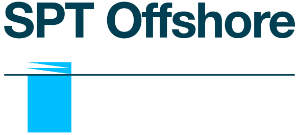The Centrica F3-FA self-installing platform is an evolved design based on our self installing platform SIP2 concept, which has proven to be robust is fully re-usable after depletion of the field.
“This project has truly been a masterpiece in our history,” says managing director Mark Riemers. The total self-installing platform and substructure weigh approximately 9,000t. The deck weighs 4,000t and measures about 63m x 42m x 24m high (excluding flare stack). The legs have a diameter of 3.25m OD x varying wall thickness from 45mm to 135mm including leg stiffening frame weigh about 790t each. The suction piles are the largest we have ever designed, built and installed and have dimensions of 15m diameter x 13m deep, weighing 410t each.
Following more than 1.5 years of design, engineering, fabrication and preparations by Heerema Vlissingen, Iv-Oil & Gas and ourselves, the platform loaded on a barge sailed out Tuesday evening on 31 August. Upon arrival in the field on Thursday 2 September, we commenced the mooring, undoing the seafastening and leg lowering. All of these activities took much less time than originally anticipated. The following suction pile installation took only six hours, although 12 hours were planned. At midnight on Friday 3 September – Saturday 4 September, the deck was lifted and the cargo barge was retracted between the four legs. The overall offshore suction and lifting operation time took no more than two days and four hours, which is a new world record.
During the detailed design phase of the project, the design engineers, under the management and supervision of our client Heerema Vlissingen, were faced with various technical challenges as the design had to be adapted to the harsh North Sea environment. Due to enormous size of the suction piles and the relative slow motion behaviour of the barge (in 6m waves the barge loaded with platform rolled less than 2°, whilst the tug boat rolled 50°), the seafastening forces were significant. The specially designed seafastening were all pinned connections, so that release offshore would be simple. This indeed proved to be the case, as detaching the seafastening was achieved in only six hours.
The deck built at our client’s yard Heerema Vlissingen, was initially towed all the way from Vlissingen to the F3-FA field some three weeks ago. Bad weather necessitated us to return to Rotterdam to seek shelter. Following a week of standby in Rotterdam, the platform was successfully installed the beginning of September.
“I have to say that we have a very strong team of enthusiastic engineers. At the critical preparation phases of the project, this team totaled some 60 engineers working hard on the installation engineering and seafastening and grillage design,” says Mark Riemers.
“Prior to that we undertook model tests at the MARIN test facility to simulate the motion behaviour of the barge and platform during tow and installation. The model test data were tuned with the marine software model we used to simulate the seafastening forces and forces on the legs and platform elements. The tow and installation criteria were limited to Hsig of 4m and 1.5m respectively.”
The successful leg lowering, suction and deck lifting operation of the platform showed the company’s strong commitment towards ultimate client Centrica. SPT Offshore hopes that the field development will soon be completed (drilling is about to commence towards the end of October, after completion of the platform hook-up) and that the gas will come out at the expected flows. After the field is depleted the platform will be removed by reversed installation and towed and installed at another field in the North Sea. This shows the versatility of using suction piles and self-installing techniques.

